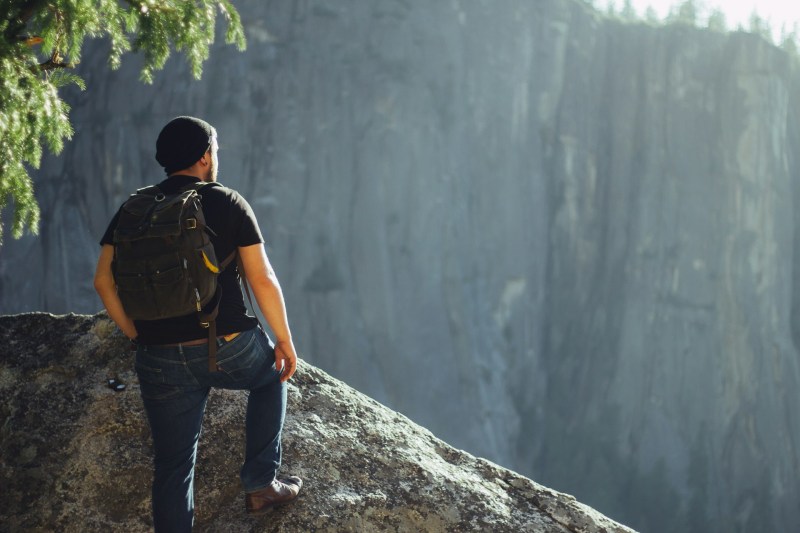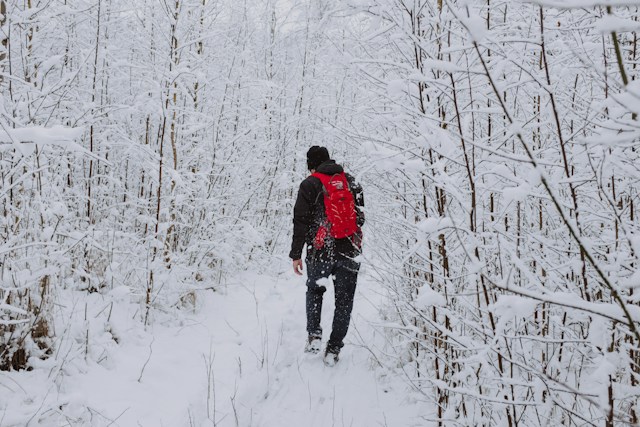There is a ton of information online about what you should and shouldn’t do when choosing your hiking attire. Some are fact, some are fiction, and some actually stem from grains of truth but ultimately leave you lacking when you need to depend on your gear the most. Here are seven hiking attire myths debunked.
1. Cotton is always bad for hiking

While “cotton kills” is a common mantra among hikers, it truly depends on the condition. The reason why people say this is because cotton retains a lot of moisture, which can be dangerous in cold or wet conditions because you won’t get completely dry once you’re wet. However, if you’re hiking in hot or dry climates, lightweight cotton attire can be breathable and cooling.
2. You should always wear hiking boots

Just because you’re hiking doesn’t mean that
3. Thicker socks prevent blisters

Despite common belief, thicker socks don’t prevent blisters. Blister prevention is more about the fit, material, and moisture-wicking abilities of your sock than thickness. In fact, thick socks can often make things a whole lot worse because they can make your shoes feel too tight. This increases the friction at pressure points, which ultimately leads to blisters. Thicker socks also tend to trap more heat, which can make your feet sweat more. Moist skin is prone to blistering, so just opt for a high-quality hiking sock instead.
4. Waterproof means sweatproof

Before you go and buy yourself a pair of waterproof hiking pants, consider what that fabric will do from the waist-down after you’ve hiked five miles in record time. Yeah, not fun. Waterproof materials trap moisture inside, leading to sweat buildup and chafing. For the best results, look for gear that’s labeled as both waterproof and breathable. GORE-TEX and eVent are good options but make sure that you find jackets and
5. More layers means more warmth

No amount of layered hoodies will beat the comfort and warmth of a strategic clothes layering system. Over-layering can cause you to sweat and grow cold once you stop moving, so don’t be that guy. A great layering system comes in three stages: the base layer, the mid-layer, and the outer layer.
The base layer is for pulling moisture away from your body. One of the best fabrics for a base layer is merino wool, which has odor-repelling properties to boot. The mid-layer consists of an insulate like a down or fleece jacket. And finally, the outer layer, or the shell, protects you from wind and rain. For more details about how to put your own layering system together, check out this guide.
6. You don’t need to worry about sun protection on cloudy days

Since UV rays can penetrate clouds up to 80% of the time, you’re still at risk for sunburn and UV damage on overcast days. That goes for forested areas, as well. If you don’t want any unexpected burns or skin damage, wear UPF-rated hiking attire and, apply a broad-spectrum sunscreen on exposed areas, and re-apply throughout the day. Some people think that a higher SPF means that you don’t have to re-apply, but even SPF 50+ needs reapplication after about two hours, sooner if you’re sweating heavily or engaging in water sports.
Sunglasses and wide-brim hats are also great additions, but you can also protect your neck with a bandana or a neck later with UPF protection.
7. You can hike in any weather if you just have the right hiking attire

The outdoor gear industry markets products designed to handle extreme conditions, such as waterproof jackets, insulated layers, and specialized footwear. This can give the impression that as long as you’re dressed properly, you can safely hike in any weather, no matter how severe.
While high-quality gear can significantly improve safety and comfort in challenging conditions, it has limitations. No clothing can protect you from lightning, extreme heat, extreme cold, or flash flooding. If the weather forecast looks dismal, listen to your gut and stay home. It’s better to turn back early than to push further into worsening conditions. Know your limits, and stick to your backup plan.
These common myths lead to discomfort, inefficiency, or just plain danger. The key takeaway is that hiking gear should be chosen based on the specific trail, weather conditions, and your personal needs. No single item or piece of advice fits every situation. Prioritize how each piece fits on your body, its functionality, and its adaptability to your trail’s conditions, and you’ll be outfitted to handle the journey ahead.




